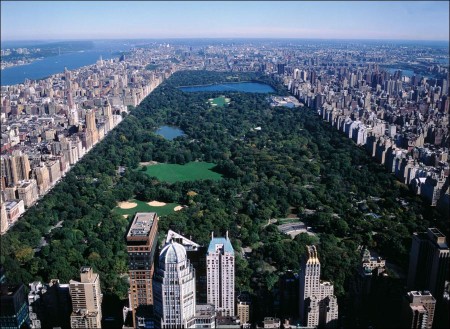For whatever good reason he visits the park a person sometimes finds himself hoping that a corner here and there in this beautiful garden spot will elude the attention of the renovators. They are enormously useful public servants, the garnishers and clean-sweepers of the world who are all the time clearing away old rubbish and substituting fine clean concrete for cracked asphalt and aging brick and stone.
People ask themselves with wonder and contrition how could they have possibly been so blind to the approaching storm. On every hand the signs were staring them in the face.
The signs stared in the face of one elderly gentleman who used to stroll across Central Park on his way to work late in the morning, such being the special nature of his occupation. At that hour the perambulator and kindergarten population was already out in full force. Mothers and nurses gossiped on the benches while the little ones slept in their carriages or played games on the grass or rode their tricycles on the cement walks. The particular sign that stared this elderly gentleman in the face and which he completely failed to read was the number of small boys, averaging perhaps five years, who discharged toy pistols at him in the character of G-men.
Those were the days, it will be recalled, when all our minds, elderly gentlemen and little boys and little girls in Central Park, were being conditioned against war as a beastly and hateful thing. Tin soldiers for little boys were heavily frowned upon, and so were toy pistols and battleships which wound up like a clock and made a brave splash in the bathtub. Yet in the face of this far-flung crusade against the military life here were little boys on the park walks in the vicinity of Ninety-sixth Street pointing their guns at harmless elderly wayfarers, or actually leaping out of ambush with pistol flourishes and loud outcries of “Bang!”
To be sure, it should be said in justice to our elderly hero that he did occasionally wonder why there should be so much gun play among the five-year-olds in Central Park in the face of so much anti-war preaching and conditioning and outlawing. He arrived at the cynical conclusion that it was a case of the old Adam whom we kick out of the door as a soldier with a gun and he climbs in at the window as a G-man defending society with a gat. Further than this our hero’s imagination did not go. He was part and parcel of his times and of the illusions of the times.
Landlords with apartments to let along Central Park regularly — and quite legitimately — play up the fact that their fortunate tenants have outside their doors and windows a magnificent garden of 840 acres. They mean the park. The word garden is justified for more than one reason. Today Central Park is more of a garden and less. of a park than it was in William Jennings Bryan’s time, fifty years ago in round numbers.
It is more of a garden and less of a park than it was, in round numbers, thirty years ago when William Dean Howells sat there on a bench and watched the children play and saw men and women stroll by and reflected on life at eighty, as Howells then was. He set down his thoughts in his beautiful limpid prose for his monthly magazine article. Central Park around 1920 was less of a garden than it is today because it had much less of the formal granite and cement and miscellaneous garnishment of today. But even more important is the fact that Central Park as late as 1920 did not have the garden wall which today encloses it on three sides to the height, in places, of several hundred feet.
Views: 374



